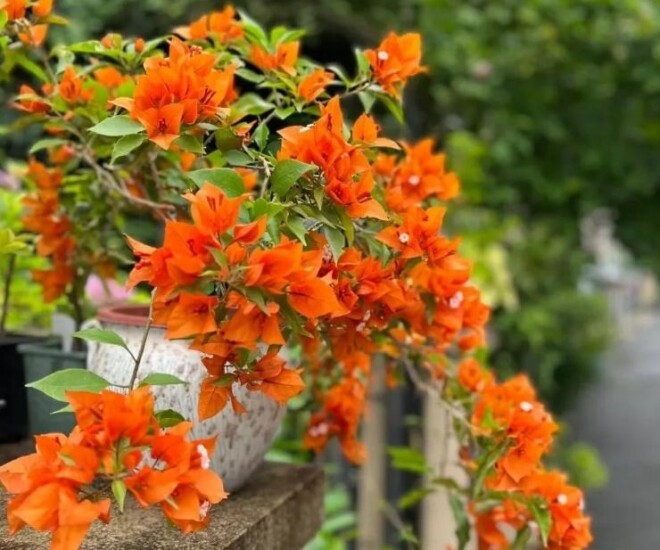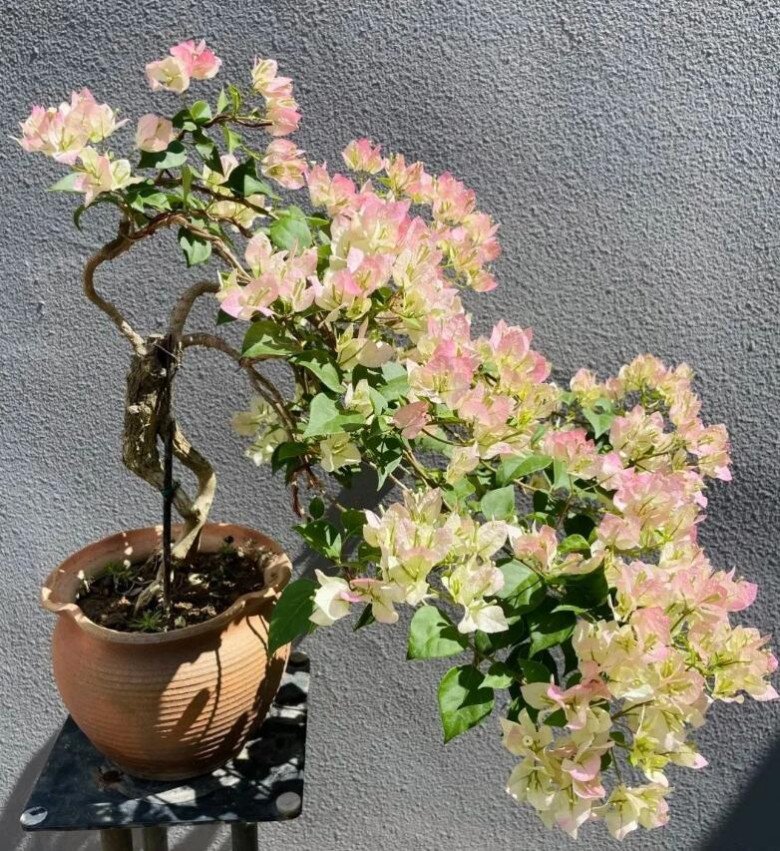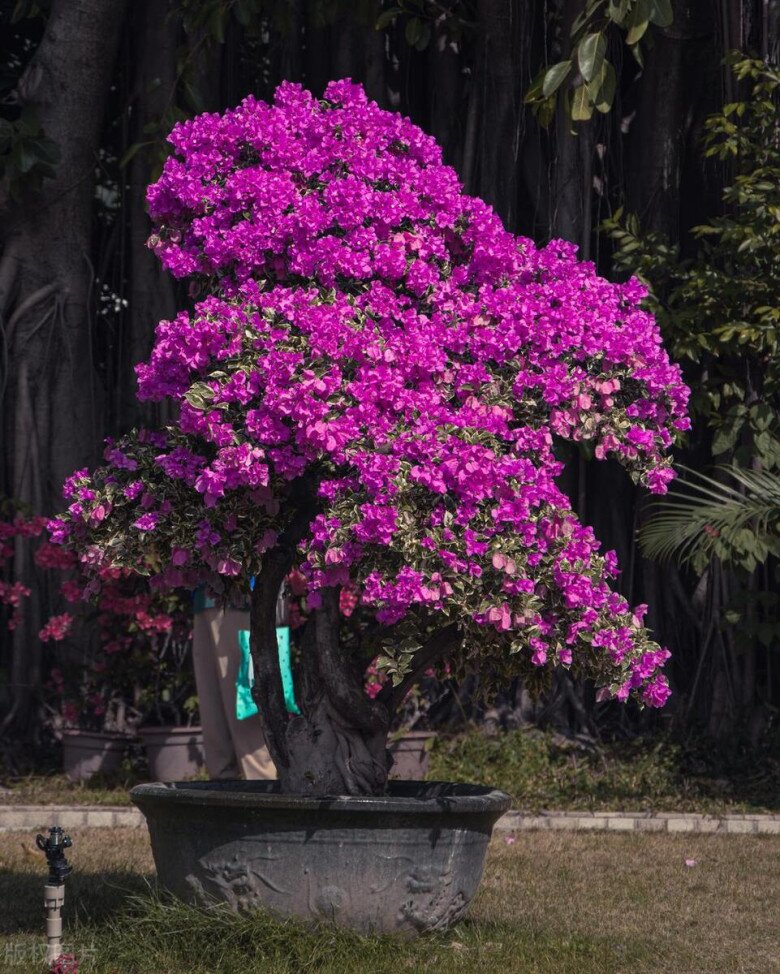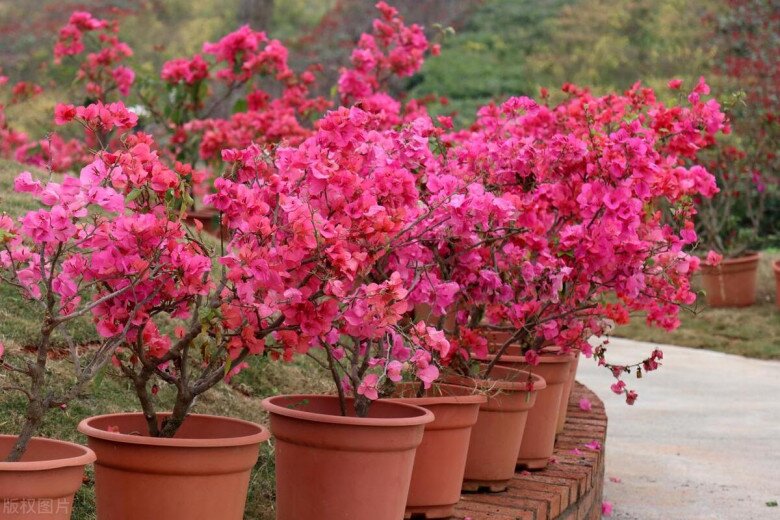It’s no surprise that more and more people are falling in love with bougainvillea gardening. However, if not cared for properly, the plant will only produce leaves and no flowers, making it look no different than an ordinary houseplant in autumn.
In fact, if you’re growing bougainvillea, simply follow the “3 More, 1 Less” rule below, and you’ll still be able to admire its blooming beauty in the fall.

1. Prune away tangled branches
The first step is to prune away any tangled branches. After the Autumnal Equinox, the weather usually brings more rain and intense sunlight, causing bougainvillea branches and leaves to grow rapidly and become lush, but with no flowers. At this point, it’s necessary to trim away the unruly parts to reduce the load on the plant and create favorable conditions for flower growth.
When pruning, cut away branches that are too high, as well as those that intersect, are overgrown, withered, or weak. This helps the plant to be more airy and better absorb sunlight, while also reducing nutrient loss, ensuring that nutrients are focused on nourishing flowers rather than leaves.
Not only should you prune branches, but also thin out the leaves on the remaining branches, especially the older and larger ones. These leaves not only consume nutrients but also block sunlight.
Removing old leaves also stimulates the plant to produce new buds, as there’s an old saying: “Pluck a leaf, and a bud will grow.” So, don’t hesitate to prune when necessary.
2. Fertilize generously to stimulate bud and flower production
After pruning, the next step to help bougainvillea continue to thrive and bloom is to fertilize. At this stage, providing extra nutrition is crucial to encourage the growth of new branches and leaves and prepare for the flowering process.
You can use a specialized fertilizer such as Hua Duo Duo No. 2, as this type of fertilizer has a nitrogen-phosphorus-potassium ratio of 1:3:2 and also contains various trace elements. Nitrogen helps the plant develop new buds and leaves, while phosphorus and potassium effectively stimulate flowering.

Alternatively, you can choose to apply a general-purpose fertilizer or organic fertilizer first to promote the growth of branches and leaves. When the plant starts to sprout buds, switch to using monammonium phosphate (potassium phosphate such as KH₂PO₄) to induce flowering. However, using Hua Duo Duo No. 2 from the beginning would be simpler and more convenient.
When using Hua Duo Duo No. 2, simply dilute it to a 0.2% solution and water the plant about once a week, preferably in the cool evening hours. When the bougainvillea starts blooming profusely, stop using this fertilizer to avoid shortening the flowering period.
After the flowers have bloomed, the next stage of care should prioritize fertilizing with a high phosphorus and potassium content. This will help curb excessive leaf growth, promote lignification, make the plant sturdier, and prevent damage during winter. Proper fertilization will also encourage continuous flowering in successive waves, without interruption.

3. Provide ample sunlight
To ensure even and vibrant flowering, don’t skimp on sunlight. Bougainvillea is a sun-loving plant and can tolerate intense sunlight. In fact, the more sun it receives, the healthier it becomes, and the more likely it is to bloom.
However, bougainvillea is a short-day plant, so it doesn’t require sunlight throughout the day. Just 6 to 8 hours of sunlight per day is enough to make the branches sturdy, ensure even bud formation, and promote blooming across the plant.
Therefore, if you’re growing bougainvillea at home, place the pot in a sunny spot, such as a south-, east-, or west-facing balcony or windowsill. Additionally, opening the window for ventilation is recommended. While bougainvillea is not a “sensitive” plant prone to diseases, good air circulation will promote its healthy growth and limit pest problems, ensuring lush foliage year-round and continuous flowering.

4. Reduce watering to induce flowering
Controlling the amount of water is also crucial for bougainvillea to bloom. However, reducing water is not an easy task, as overdoing it can dry out and kill the roots, while insufficient control will result in continued leaf growth without flowers.
To properly control watering, observe the plant in the late afternoon. When you notice the leaves starting to droop, that’s the signal to water generously. Avoid watering at noon, even if the leaves droop due to the intense heat, as this is only a temporary reaction to high temperatures and not a true sign of water deficiency. Watering at this time can cause heat stress and hinder flowering.
After the first generous watering, continue to observe. If the leaves droop again the next evening, water generously once more. Repeat this process about three times, and the plant will begin to differentiate flower buds, preparing for the flowering phase.
Once the bougainvillea starts blooming, stop controlling the water intake. If you continue to let the plant experience water stress, the flowers will quickly wither and fall prematurely. At this point, water when the soil starts to turn white and dry. Each watering should be thorough to maintain fresh and vibrant flowers and prolong their lifespan.






























